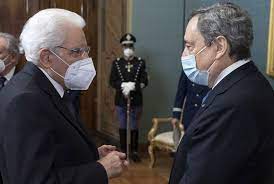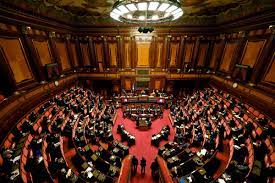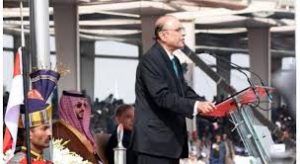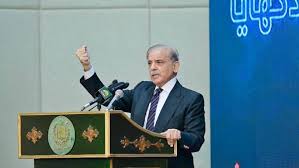Italy: Parliament prepares to elect new president of Italy

Rome: Italy’s parliament is to convene on Monday to begin the complex process of voting for a new head of state to replace Sergio Mattarella whose seven-year term of office ends in less than two weeks.
The 13th president of Italy will be elected by more than 1,000 parliamentarians and regional representatives, with Italian prime minister Mario Draghi, 74, tipped as frontrunner for the top job.
The former European Central Bank (ECB) chief has long been touted as Italy’s next president and – despite never expressly saying so – has hinted that he would be willing to switch from prime minister to head of state.
In contrast to Draghi’s refusal to confirm or deny his interest in the role, Silvio Berlusconi, the four-time former premier and controversial media mogul, has been actively seeking a path to the Quirinal Palace.

Berlusconi has been backed by the centrodestra alliance of parties including his own centre-right Forza Italia, along with the right-wing Lega led by Matteo Salvini and the far-right Fratelli d’Italia (FdI) led by Giorgia Meloni.
The 85-year-old billionaire has taken out full-page adverts in Italian newspapers listing his achievements on the national and world stage, however his support appears to be fading and he is expected to make an announcement by Sunday, the day before the first round of elections.
Berlusconi’s bid is fiercely opposed by the populist Movimento 5 Stelle (M5S) and the centre-left Partito Democratico (PD) whose leader Enrico Letta has repeatedly called for Italy’s next president to be a bipartisan figure.
Among the many other names mentioned as potential candidates are former premiers Giuliano Amato and Paolo Gentiloni, current justice minister Marta Cartabia, and former lower house speaker Pier Ferdinando Casini.
Another option would be for Mattarella to remain as president, at least until the scheduled end of the parliamentary term in 2023.
However Mattarella, 80, has repeated ruled this out and has reportedly signed a lease to rent an apartment in Rome.
A move by Draghi to the Quirinale would risk political turmoil, either triggering elections a year ahead of schedule or resulting in the installation of a new premier.
Draghi refuses to answer questions on his intentions, however in late December he told reporters that it was “essential” for the current coalition to stay intact until 2023.
The timing is delicate as the national unity government grapples with covid-19 and implements the EU’s multi-billion post-pandemic recovery fund, with Draghi seen by many as the most qualified person for the latter.
Adding to the political dilemma is the pandemic and the government’s covid restrictions which threaten to throw a spanner in the works.
There are currently about 35 parliamentarians either in isolation or in quarantine due to covid, leading the office of lower house speaker Roberto Fico to propose a “drive in” voting site.
However this scenario would require the government to waive its rules to permit the lawmakers to leave their homes to vote.
The are no official candidates, and lawmakers can vote for literally anyone they like, so long as they are an Italian citizen aged 50 or over.
The president of Italy is elected by both houses of parliament in joint session plus three representatives from each region.
Voting is held in secret and a two thirds majority is needed on the first three ballots and then after that by an absolute majority.
Although largely ceremonial, Italy’s head of state plays a key role during times of political crisis.
The president has the power to appoint a prime minister, as seen when the executive of former premier Giuseppe Conte collapsed almost a year ago, paving the way for Draghi’s broad coalition government.
Voting for Italy’s new president is expected to take several days, and the term of office is seven years. The president receives an annual salary of about €239,000.





